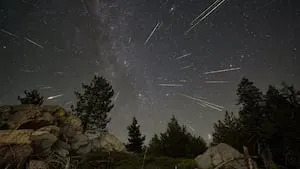Rare Celestial Alignment and Perseid Meteor Shower Offer Stunning Weekend Display

Starting this weekend and extending through much of August, stargazers are presented with a remarkable opportunity to observe two distinct astronomical events: a rare alignment of six planets and the peak of the annual Perseid meteor shower. The planetary configuration, beginning August 10th and visible until late in the month, will position Mercury, Venus, Jupiter, Saturn, Uranus, and Neptune relatively close together in the eastern sky before sunrise. While Venus, Jupiter, Saturn, and Mercury are readily discernible with the naked eye, Uranus and Neptune require binoculars or a telescope for optimal viewing.
This alignment is considered unusual, marking the second such occurrence this year—the previous instance took place in January. Although the planets will not appear to form a perfectly straight line from Earth’s perspective, their proximity offers a striking visual spectacle.
Concurrently, the Perseid meteor shower, an annual event resulting from Earth’s passage through debris left behind by comet Swift-Tuttle, is expected to reach its peak between August 11th and 14th. Observers can anticipate seeing meteors radiating from the constellation Perseus, named in honor of the Greek mythological hero Perseus—the son of Zeus and Danaë—whose story involves a shower of gold symbolizing his divine parentage. NASA reports that Earth encounters this meteor stream annually between July 17th and August 24th.
Under favorable weather conditions expected to persist through mid-next week, stargazers can expect excellent viewing opportunities. The best time for observing the Perseid meteors is during the hours after sunset, particularly between midnight and dawn, when up to 100 meteors per hour may be visible in a dark sky away from light pollution. These small particles of debris burn up approximately 60 miles above Earth’s surface, creating fleeting trails of light.









